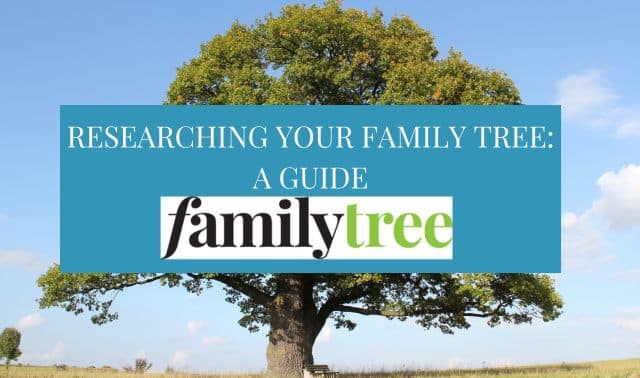Sign up for the Family Tree Newsletter! Plus, you’ll receive our 10 Essential Genealogy Research Forms PDF as a special thank you.
Get Your Free Genealogy Forms
"*" indicates required fields
There is so much genealogy information online, your ancestors may be just a click away. If you’re curious about your family tree but don’t know where to begin, these five steps can help you get started!
1. Search the Attic
Be sure to not overlook the offline sources, which may be closer than you think! Scour your attics, basements and other storage locations for family treasures that may be hiding in plain sight. Don’t forget to keep an eye out for non-photo items that may bear an ancestor’s name, such as a certificate or diploma.
Here are a list of home sources to look for:
- photos
- slides
- scrapbooks
- Family Bibles
- letters
Use these items to generate a list of questions and possible leads. Also look for any genealogical work that other relatives have done.
2. Ask Your Relatives
Our family members are some of the best sources of genealogy information. Ask your oldest relatives if they would be willing to do a family history interview with you.
If your attic search yielded some old photos or other artifacts, be sure to bring them along. Photos and other items can bring out memories, stories and details that would have otherwise gone unmentioned. Be sure to take notes, or record the interview if your relatives are willing!
3. Do a General Search
There are so many places to search for ancestors online, and many of them are free.
Whenever you search for an ancestor online (even if it’s just a simple Google search) try to add additional details and make use of the filtering and Advanced Search features.
Online searches can generate thousands upon thousands of results. Any information you can provide (dates, place names, etc.) can help you narrow in on information that is more likely to be relevant to you.
4. Search the Family History Library Catalog
FamilySearch, a nonprofit run by the Church of Jesus Christ of Latter-day Saints, is the largest genealogy organization in the world. For decades, it’s been digitizing historical records from around the world and cataloging them in its library in Salt Lake City and at FamilySearch Centers around the world.
Among FamilySearch’s massive volumes are birth records, death records, marriage records, censuses, court records and more. All of FamilySearch’s microfilm collection has been digitized, though not everything is searchable yet (and some records can only be viewed at the FamilySearch Library or FamilySearch Centers). But FamilySearch’s resources—all free to search—are second-to-none.
If you know some of the towns and places where your ancestors lived, you can use FamilySearch’s online catalog to see what records they have from your ancestral places. These records can include newspapers, local histories, city directories and more.
5. Search Census Records
You can search census records for free on FamilySearch, Ancestry, or the US National Archives. Begin with the most current record set (the most recent available census is 1950) and try to trace your family back through time.
Last updated, August 2023








